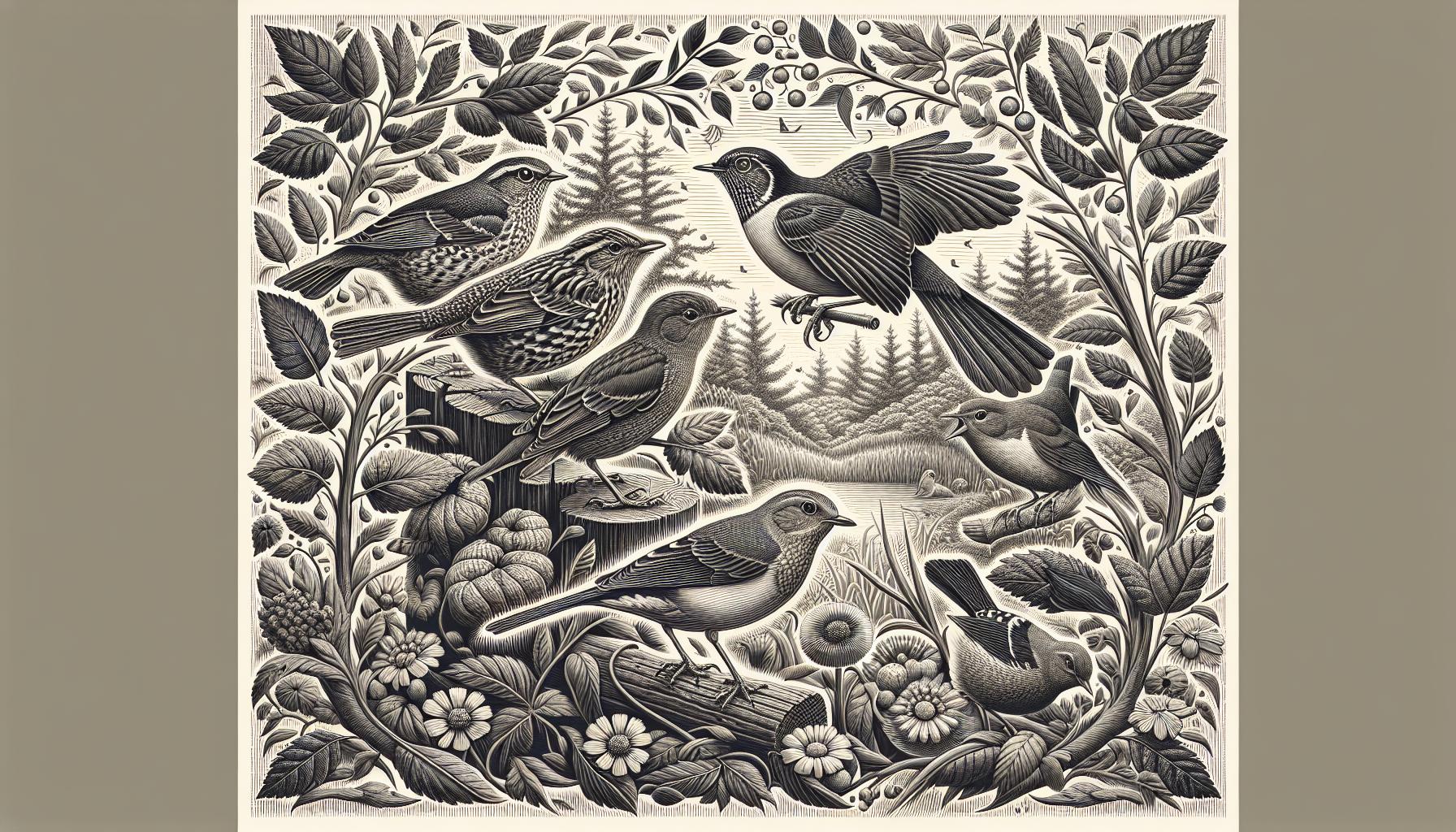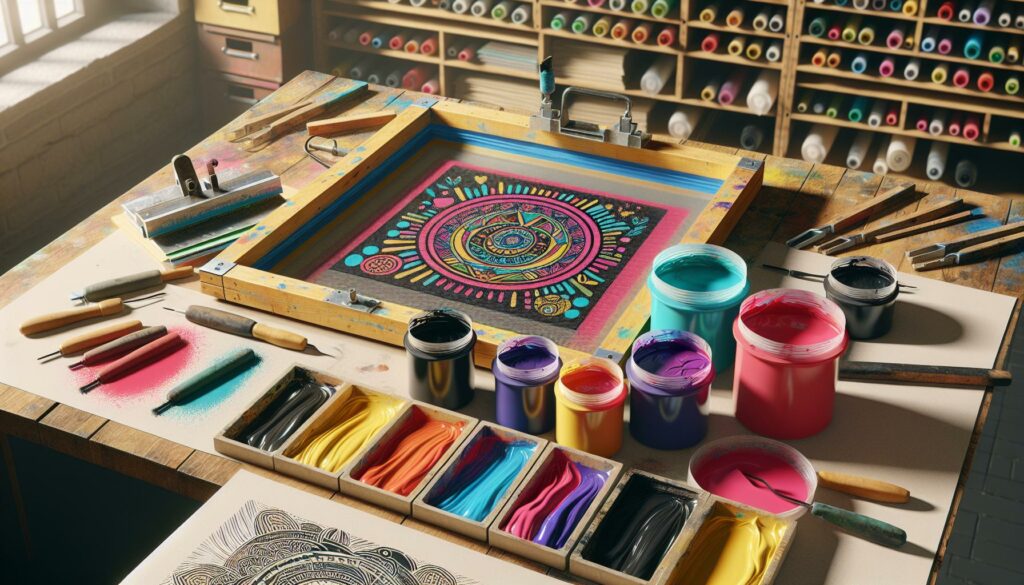Printmaking has a rich history that stretches back centuries, but one technique from the early 18th century stands out for its innovation and artistry. This method revolutionized the way artists could reproduce their work, making art more accessible and allowing for greater experimentation. As I delve into the intricacies of this printmaking technique, you’ll discover how it shaped the artistic landscape of its time.
The 18th century was a period of immense creativity and change, and this technique played a crucial role in that evolution. By blending traditional craftsmanship with new ideas, artists began to push boundaries and explore fresh narratives. Join me as I explore the origins, processes, and lasting impact of this fascinating printmaking technique that continues to inspire artists today.
- Is a Printmaking Technique From the Beginning of the 18th Century? enhancing artistic expression and accessibility.
- Notable methods include relief printing, intaglio, lithography, and screen printing, each offering unique characteristics and outcomes.
- Influential artists like Francisco Goya and Thomas Bewick utilized these techniques to communicate social and political narratives, shaping public discourse.
- The evolution of printmaking during this period introduced groundbreaking methods such as mezzotint and aquatint, allowing for greater detail and tonal range.
- The introduction of lithography in the late 18th century revolutionized print production, making art more widely distributable and popular.
- Understanding these historical techniques deepens appreciation for both classic and contemporary printmaking practices.
Is a Printmaking Technique From the Beginning of the 18th Century
Printmaking encompasses various methods of transferring images onto a substrate, typically paper. Is a Printmaking Technique From the Beginning of the 18th Century? Techniques developed over the centuries include relief printing, intaglio, lithography, and screen printing. Each technique offers distinct characteristics that affect the final artwork.
Relief Printing
Relief printing involves carving away portions of a surface to create a raised image. Ink is applied to these raised areas, producing prints. Common tools include woodblocks and linoleum. Historical examples feature artists like Albrecht Dürer, who utilized this technique in the 15th century.
Intaglio
Intaglio printing involves incising an image into a plate’s surface. The incised areas hold ink, producing detailed prints. Techniques include etching, engraving, and mezzotint. This process allows for fine lines and rich textures, making it a favorite among artists like Rembrandt and Francisco Goya.
Lithography
Lithography relies on the chemical repulsion between oil and water. Artists draw on a flat stone or metal plate using a greasy medium. Ink adheres only to the drawn areas, allowing for a wide range of tones and textures. Invented in the late 18th century, this method has influenced many contemporary practices.
Screen Printing
Is a Printmaking Technique From the Beginning of the 18th Century? Screen printing involves forcing ink through a mesh screen to create a design. Originally developed for textiles, this technique gained popularity in the 20th century with artists like Andy Warhol. The versatility allows for vibrant colors and large-scale prints, making it suitable for various applications.
Each printmaking technique contributes to the rich tapestry of artistic expression. Understanding these methods enhances appreciation for both historical and modern artworks.
Historical Context of Printmaking

Printmaking experienced significant developments in the 18th century, establishing new avenues for artistic expression and dissemination. This era served as a foundation for many techniques that shaped the future of visual art.
Origins in the 18th Century
The first half of the 18th century marked the rise of printmaking techniques that facilitated wider distribution of artworks. Inventors and artists explored various methods, enhancing traditional processes and introducing innovative technologies. Techniques like mezzotint and aquatint emerged, allowing for greater tonal range and detail in prints. Artists utilized these methods to create more accessible reproductions of their work, paving the way for broader artistic engagement.
Influences on Art and Culture
The evolution of printmaking during this period profoundly impacted art and culture. Artists like Francisco Goya and Thomas Bewick embraced printmaking to communicate social and political narratives. This artistic medium became an essential tool for the dissemination of ideas, fueling movements such as Romanticism. Printmaking also influenced literature and education, allowing illustrations to accompany printed texts. The accessibility of printed images fostered a new appreciation for art, encouraging public dialogue and participation in artistic culture.
Characteristics of the Printmaking Technique

This printmaking technique features unique attributes that distinguish it from other artistic practices. Is a Printmaking Technique From the Beginning of the 18th Century? The combination of specific materials and rigorous processes contributes to its historical significance and enduring appeal.
Materials Used
Printmakers utilized various materials to achieve distinct results. Commonly, artists chose:
- Plates: Copper, zinc, or wood served as the primary surfaces for engraving or etching.
- Inks: Oil-based inks provided rich, vibrant colors and fine details, while water-based inks allowed for quicker drying.
- Paper: Specialty papers, such as cotton or handmade types, ensured durability and enhanced image quality.
- Tools: Various engraving tools, including burins and etching needles, allowed for precise lines and textures.
These materials played a crucial role in shaping the printmaking outputs of the 18th century, fostering a variety of expressive possibilities.
Process and Methodology
The methodology of this printmaking technique involved several key steps, enhancing creative expression. Each stage included:
- Preparation: Artists prepared the chosen plate by polishing the surface to eliminate imperfections.
- Design: Artists sketched their designs directly onto the plate or transferred them from sketches.
- Transfer: Techniques like engraving, etching, or lithography allowed for detailed images to emerge.
- Inking: Inkers applied a thin layer of ink to the plate, ensuring coverage of the engraved areas.
- Pressing: A printing press applied even pressure to transfer the image onto paper, capturing intricate details.
These processes allowed for experimentation and innovation, contributing to the evolution of printmaking as an art form.
Notable Artists and Works

Is a Printmaking Technique From the Beginning of the 18th Century? The early 18th century saw influential printmakers whose works exemplified the transformative power of printmaking. Artists made significant contributions, expanding the boundaries of artistic expression.
Key Figures in 18th Century Printmaking
- Francisco Goya: Known for his exploration of political and social themes, Goya utilized etching and aquatint. His series “Los Caprichos” critiques societal norms and human folly.
- Thomas Bewick: A prominent figure in wood engraving, Bewick revolutionized the technique with his detailed nature illustrations. His work captured the essence of British wildlife and culture in “A History of British Birds.”
- John Tenniel: Celebrated for his illustrations of Lewis Carroll’s “Alice’s Adventures in Wonderland,” Tenniel’s lithographic prints brought whimsical narratives to life, influencing children’s literature.
- Albrecht Dürer: Though primarily known for earlier work, Dürer’s impact on the 18th century persists. His mastery of woodcut and engraving set standards in detail and composition, inspiring future generations.
| Artist | Work Title | Technique | Year |
|---|---|---|---|
| Francisco Goya | “Los Caprichos” | Etching | 1799 |
| Thomas Bewick | “A History of British Birds” | Wood Engraving | 1797-1804 |
| John Tenniel | “Alice’s Adventures in Wonderland” | Lithography | 1865 |
| Albrecht Dürer | “The Four Horsemen of the Apocalypse” | Woodcut | 1498 |
These artworks not only demonstrate the technical innovations of the time but also reflect broader social narratives. Their enduring significance showcases how printmakers shaped public discourse and artistic traditions, instrumental in paving the way for contemporary practices.
Evolution of the Technique
The evolution of this printmaking technique during the 18th century marked a pivotal transition in artistic methods and accessibility. Artists embraced innovations that enhanced detail, depth, and creativity. Mezzotint emerged as a favored technique, offering rich tonal variations through a unique process of burrowing into metal plates. Aquatint further expanded this tonal range, allowing artists to achieve subtle gradations of color and shade, enriching prints significantly.
Influential artists like Francisco Goya and Thomas Bewick played essential roles in this evolution. Goya utilized etching techniques in works like “Los Caprichos,” blending social commentary with artistic expression, which fostered public discourse. Bewick’s wood engravings in “A History of British Birds” exemplified precision and attention to detail, elevating the standard of printmaking and inspiring future generations.
As printmaking gained popularity, so did experimentation with materials and processes. Artists began to incorporate various inks, specialty papers, and mixed techniques, leading to diverse expressive outcomes. This experimentation not only pushed the boundaries of traditional methods but also enabled artists to convey complex narratives and emotions through their work.
The late 18th century witnessed the introduction of lithography, which emerged as a revolutionary technique. Lithography enabled artists to produce prints with greater speed and ease, allowing for wider distribution and accessibility. Is a Printmaking Technique From the Beginning of the 18th Century? The flexibility of this method drew artists such as John Tenniel, whose whimsical illustrations for “Alice’s Adventures in Wonderland” captivated audiences and showcased the potential of printmaking as a popular medium.
This period of innovation and experimentation solidified printmaking’s place in the artistic canon. The blending of crafted methods with new techniques provided endless possibilities for artistic expression, paving the way for contemporary practices and continued influence in the art world.
The printmaking technique from the early 18th century truly reshaped the landscape of art. It sparked creativity and allowed artists to express themselves in ways that were previously unimaginable. This method not only made art more accessible but also encouraged a dialogue around societal issues.
As I reflect on the impact of this technique, I’m inspired by how it paved the way for future innovations. The legacy of artists like Goya and Bewick continues to resonate in contemporary practices. Their contributions remind us of the power of printmaking to challenge norms and foster connection. Embracing this rich history can deepen our appreciation for both past and present artistic endeavors.



